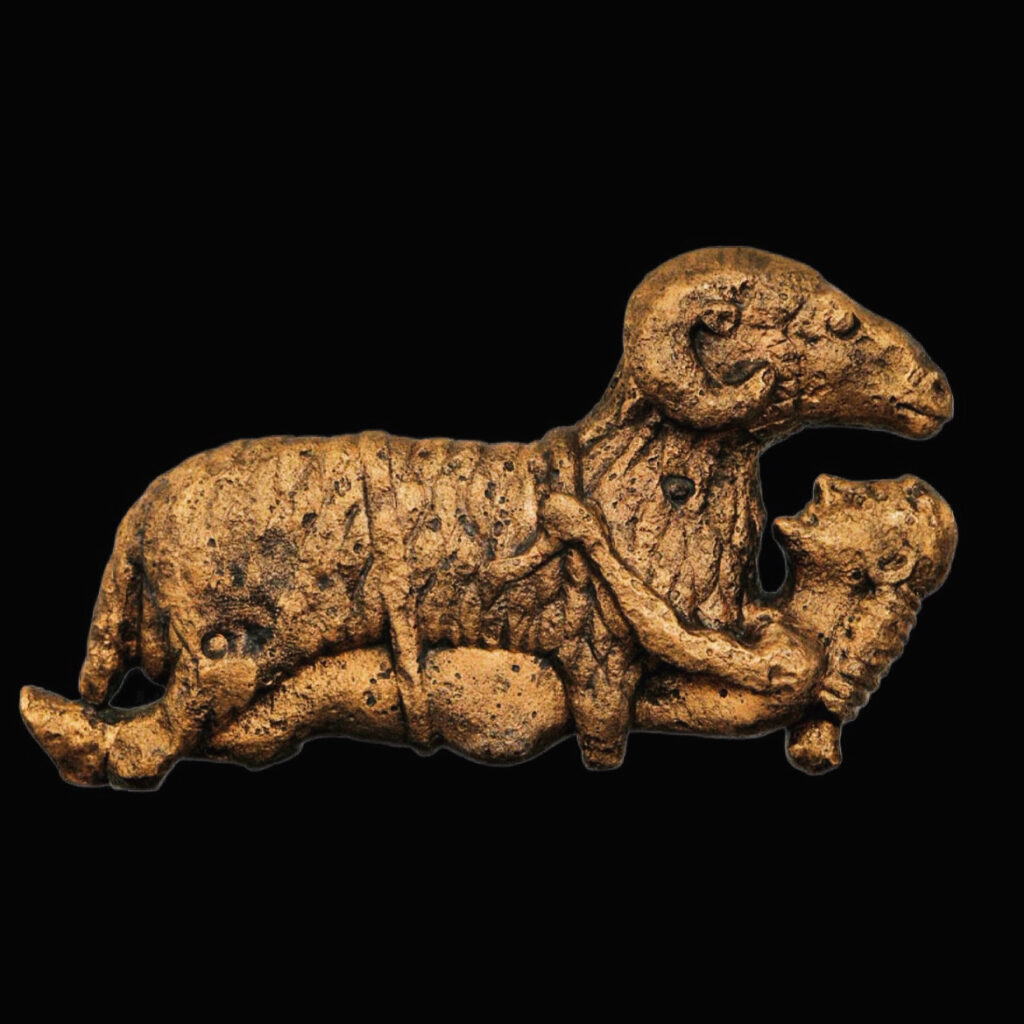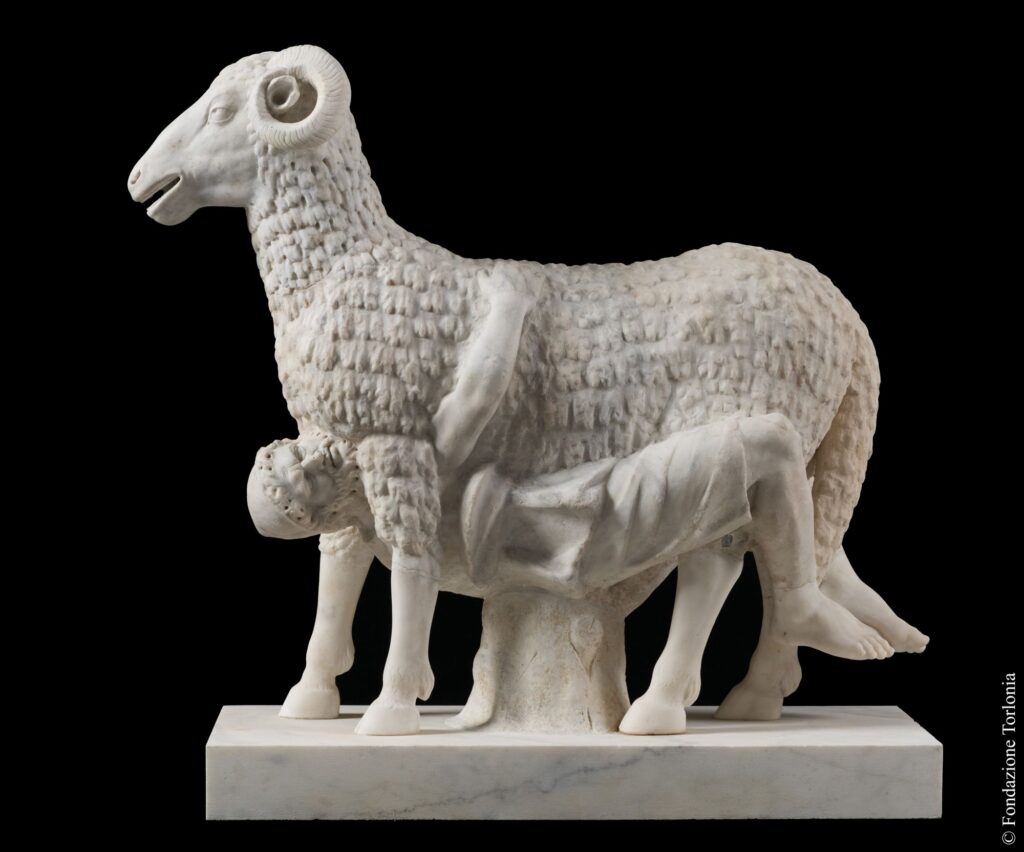Odysseus was at his bravest and most wily when orchestrating his comrades’ grand escape from the cave of the dread Cyclops Polyphemus. After knocking him out with strong wine (a dirty trick) and blinding him with a heated and pointy branch, he tied the giant’s fleecy sheep together in threes with a Greek strapped to the belly of the central ewe.
The hero himself was the rear guard, and chose the flock’s imposing, shaggy ram as his conveyance. Blind and raging, Polyphemus counted the sheep as they left the cave, but didn’t grope their underbellies and Odysseus and crew evaded detection AND made off with his livelihood.


Here our fearless hero is shown, serene in his machinations and clinging like a limpet to the shaggy beast. The little bronze found at Delphi was likely an attachment for a big vessel dedicated in the sanctuary (nobody really knows), and is an especially early version (ca. 550-540 B.C) of this bizarre spectacle.
The subject was taken up intermittently in subsequent centuries (on a few really terrific vases…including one fragment from about the same period in a private collection) – always requiring some artistic flair and consummate technical skill to pull off. (Perhaps the most famous is the lifesized Roman marble group at the right, where the great escape is monumentalized to great effect (part of the Torlonia collection).




